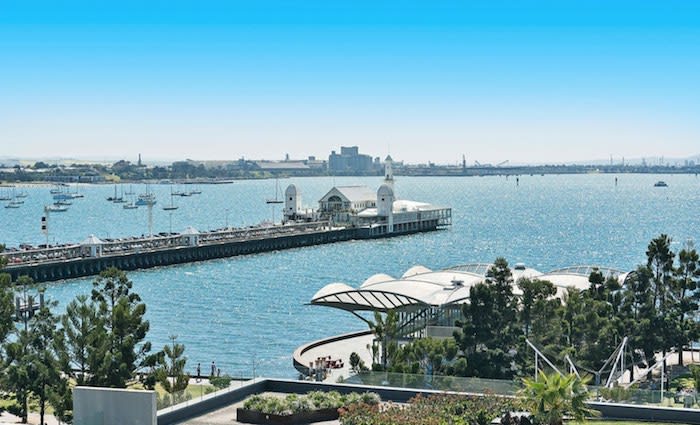Victorian regions where property prices are growing strongly: Hotspotting's Terry Ryder
EXPERT OBSERVER
Prices are growing strongly in selected markets in different parts of Australia, not that you would know it if you confined your research to reading mainstream media.
And the areas where the growth is the greatest include the fringes of the Melbourne metropolitan area and locations within an hour or so of the capital city.
Last week I wrote: “Right now, many of the best opportunities to buy well for future growth and good rental returns are in regional Australia. While media’s focus remains firmly on the capital cities, the reality is that the strongest price growth in the past year has been recorded in regional centres.
“The best-performing markets this year, based on our analysis of all the research, have been Geelong in Victoria (above), the towns of Cardinia Shire just outside Melbourne, the NSW Central Coast and the Newcastle region.”
One of the key factors here is that the most active buyers, now, are those looking for affordability. So first-home buyers and investors on small budgets have been targeting the outer-ring suburbs of Melbourne and near-city regional centres.
The problem, once again, is that media likes to dumb things down for its readers and listeners, on the basis that we’re all a bit thick and can’t digest sophisticated information (although I suspect it’s the journalists themselves who need to have things dumbed down, because few of them have specialist knowledge of the subject).
So they generalise. And the generalised data tells us Melbourne prices are falling – apparently, because it depends on whose data you believe.
Consider this: in annual terms, CoreLogic records a 4.5 percent decline in Melbourne house prices, but SQM Research essentially says there’s no change and the latest ABS figures report a 2.6 percent rise.
With apartments, CoreLogic reports a slight 0.3 percent rise in Melbourne’s median price, ABS has a 1.4 percent increase and SQM claims a 7 percent rise.
So it’s not a fact to declare that Melbourne prices are falling, given that some research data contradicts the claim. What is true, I think, is that the average rate of growth is much lower than before.
But, and here’s the thing, the growth remains strong in some areas, particularly the outer-ring suburbs being targeted by budget buyers.
The research from various sources shows that first-home buyers, nationally, are more active than at any time in the past eight years. And Melbourne is one of the national leaders for the activity of first-time buyers.
I did some detailed research last week for an interview on ABC radio Melbourne and this confirmed just how prolific the growth is in some of the outer-ring areas.
On the northern fringes of the Melbourne metropolitan area, median prices are up strongly in annual terms in Epping, Lalor, Thomastown, South Morang, Broadmeadows, Jacana and elsewhere – led by Epping (up 22 percent) and Broadmeadows (up 26 percent), according to CoreLogic figures.
It’s notable that most of those suburbs have had further solid growth in the most recent quarter.
Similar trends are evident in the south-west, where Wyndham Vale, Werribee and Hoppers Crossing have all recorded 18-19 percent growth in their median prices in annual terms, including around 3 percent growth in the most recent quarter.
But the really big growth is happening in the regional centres just outside Melbourne. Geelong has been attracting attention as a leader not just in Victoria but nationally. Domain says the median house price for the City of Greater Geelong has grown 12 percent in the past year - but individual suburbs, notably the cheaper ones, have recorded much stronger figures.
North Geelong and Herne Hill are both up 24 percent in annual terms, while Corio and Norlane (which both have median house prices in the mid-$300,000s) have grown 30 percent in 12 months.
Norlane, Corio and North Geelong have each grown at least 7 percent in the most recent quarter for which we have figures.
Geelong is not an isolated example. A little beyond the Melbourne metro area to the south-east, officer, Pakenham and Warragul have recorded annual rises between 20 and 27 percent. Those three towns, plus nearby Drouin, rose a further 4 percent or so in the most recent quarter.
Other regional areas where prices have been outperforming Melbourne averages include the Surf Coast, Ballarat, Mildura and Warrnambool – and I suspect that most of these markets, as well as Bendigo and Shepparton, are very early in their growth cycles.
The latest Domain data indicates that there are eight regional areas of New South Wales which have recorded annual growth above 10 percent, but I’ll save that discussion until a future column.
Remember this data next time you read in mainstream media that property prices are falling everywhere.
Terry Ryder is the founder of hotspotting.com.au
twitter.com/hotspotting
